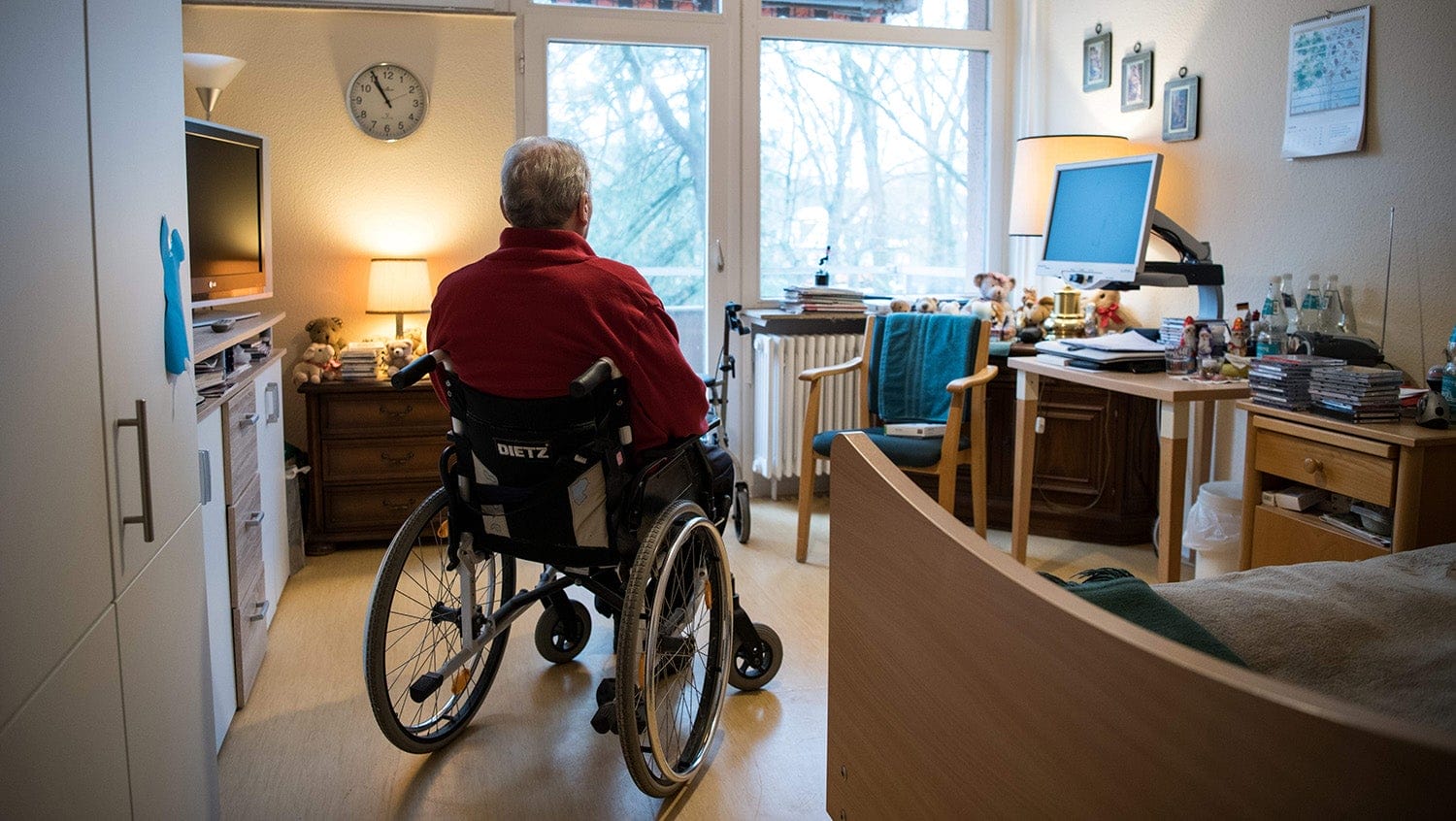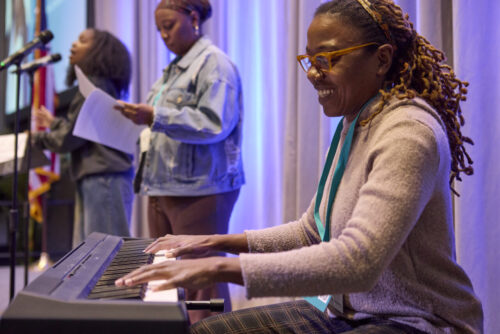Managing the Impact of Social Isolation in Nursing Homes Due to COVID-19
June 10, 2021

Stefanie Loos, Getty Images
Nursing homes mustnavigate the short-and long-term effectsof their residents' isolation with programming, staffing, and encouraging in-person visits when safe.
The COVID-19 pandemic has caused disproportionate impacts across many populations. An MMWR published in July 2020 demonstrated that the burden of COVID-19 fell disproportionally on Black and Latinx patients, as well as homeless patients and those who were older than 60 years of age. And, a Centers for Disease Control and Prevention report showed that 8 out of 10 COVID-19-related deaths in the U.S. were of people 65 years old and older.
This statistic was perhaps most clear in nursing homes and elder care facilities across the country. As of May 23, 2021, more than 132,000 people in nursing homes have died from COVID-19, and thousands of staff who work in these settings left their jobs for fear of being exposed to the virus.
During the height of the pandemic, residents of these facilities were not able to leave their rooms due to infection control policies—leaving many in isolation and without the normal social interaction that takes place while eating meals or gathering in meeting halls with their co-residents. Perhaps one of the most difficult challenges was the loss of in-person visits with family and loved ones. While drastic, this measure was necessary to keep patients and staff as safe as possible.
For those people in nursing homes and elder care facilities who survived through the pandemic thus far, their surroundings are now completely different. Many lost one or more friends to COVID-19, while others had to adjust to new caregivers. Others are experiencing increased anxiety and depression given the lack of social interaction over the past 16 months. Additionally, some residents have decreased physical capabilities, not having had the chance to walk or use their wheelchair around their residence during the height of the pandemic. Life as they had known it is forever changed.
As things continue to move forward, and nursing homes open up to visitors, it is clear that these lingering impacts need to be addressed. Lisa Caruso, MD, a geriatrician at Boston Medical Center who sees patients in nursing homes, provides her expertise to HealthCity about how we can address the short- and long-term challenges that many of these patients face as a result of the pandemic.
HealthCity: While isolating residents in their rooms was necessary for COVID-19 safety, there are many unintended consequences that these patients are now experiencing. This includes decreased mobility, as they were not as active during the pandemic. How do you address this in both the short- and long-term?
Lisa Caruso, MD: Nursing homes have always relied on staff, mainly certified nursing assistants and the rehabilitation staff, to mobilize residents. Many residents have lost physical function and need more assistance to even get out of bed. This takes more staff.
I think the homes are struggling, as hospitals do, in having enough financial and personnel resources at the bedside to really to keep residents getting out of bed and ambulating. Family members and friends when they visit can safely assist with ambulation if needed and in encouraging residents to get out of bed alongside staff.
HC: Research has shown that social isolation is associated with cognitive decline in older adults. Are you finding that among your nursing home patients? How can you and other providers help them re-acclimate given all of the changes that they experienced?
LC: We know that social connection is related to better mental and physical health. Certainly, even before the COVID-19 pandemic, isolation was a problem in the nursing home setting if the resident didn’t have a robust external support network. Nursing homes could help by bringing back volunteers for visiting, personal services such as getting one’s nails or hair done, and music and art programs.
Overall, I think that nothing beats an in-person visit with a friend or family member. The nursing homes continue to facilitate these visits virtually but more and more in person.
HC: Throughout your career, you’ve helped patients navigate through tough situations. But this is quite different as the COVID-19 has impacted everyone. What’s the most important lesson you’ve learned throughout the pandemic? Will that change how your help your patients now?
LC: I’ve learned that nursing homes can be fragile institutions. When COVID-19 hit the facility where I work, so many residents and staff got sick at once. There just were not enough hands to take care of the residents. All of the local nursing homes and hospitals were struggling with staffing, and it was traumatizing to those of us who were working in the facilities and for residents seeing their friends pass away.
It has been tough for both the nursing home residents and the staff to move forward out of the “lock-down” mentality. Many residents are reluctant to come out of their rooms—especially new admissions who have come from the hospital for rehabilitation due to fear of becoming infected with COVID-19. But, the reality is that most residents and more and more staff are vaccinated. Testing is easier to get in the facilities, so they are much more able to monitor patients for COVID-19 infection.
What I’ve learned is to meet the resident where they are in the “re-entry” process and encourage them to reconnect with others while continuing to screen for anxiety and depression and treat appropriately.


